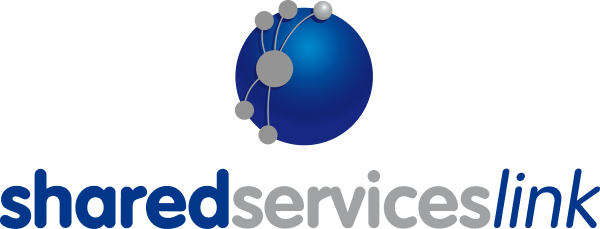Remote Working: Legacy Shared Services Will Lose

Author: Susie West October 2021
Coming into 2020, we were living in a Winner Takes Most world. As for performance KPIs, companies who had grasped digital vs. companies that continued to wallow in a legacy infrastructure stood on opposite banks of an ever-increasing gulf.
Before lockdown, many of us were already seeing this gulf. In 2019 The Hackett Group compared the Top 5 Digital Native companies in the world, with the Top 5 Non Digital Native organizations, examining 3 distinct performance areas, among them: Increase in Revenue and Increase in Net Profit – tracking growth between 2012 and 2017. Remember, this was an assessment of ten of the biggest organizations worldwide.
The Net Profit Increase for the Top 5 Digital Native companies was almost 5 times greater than the Top 5 Non Digital. Five times! But get this, the Revenue Increase by the Top 5 Digital Native companies was almost 9 times.
We will look at these figures again in 2022, but most of us can predict the multiples will climb and the gulf will have stretched even further. We are nearing the new frontier where actually the Winner Takes All and corporate carcasses of those that failed to modernize will be left to disappear.
Many businesses learned the lesson presented by these figures the hard way in Spring 2020. Forced to move from our bricks and mortar shared services centers (which served as a safe hiding place for poor process), to our new remote offices, every shared services process in every GBS was stress-tested. The “swimming-in-paper” GBSs responded to the move with a spray of expletives, having to answer hard questions regarding how they’d be able to handle the hundreds of thousands of paper invoices being sent to the centers by suppliers. “How will we handle supplier phone calls?” “Where should we locate the scanners?” was a big question. “Maybe someone in Accounts Payable could take a large scanner in their living room…?”
The Digitally-Ready GBSs had a different experience. Some were on their way to Hybrid Working anyway (part office, part home), and were already thinking about decreasing their bricks and mortar footprint. Digitally Ready team members pulled up their chairs to their new home office desks the day after turning the lights out at the center and proceeded in a “business as usual” fashion.
What have we learned 18 months on? Much comes to mind. Here, we reflect on 3 automation-related lessons:
1. Cut Through the Paper Ceiling:
Shared services organizations look to KPIs to broadcast how well they’re performing. Their internal stakeholders, bill payers and customers are calling on data as evidence that the shared services way is worth the effort. One key metric has always been Productivity (it’s a personal favorite at sharedserviceslink). With this one KPI alone, you can tell so much about a shared services organization. In The Hackett Group’s 2019 Purchase to Pay Performance Study, “Top Performers” are 2.4 times more productive than the Peer group. Why? Because they have implemented P2P automation – electronic invoicing via a network, P cards, workflow, dynamic discounting and supplier portals. Paper-based GBSs saw their productivity increase marginally during Lockdown as, according to The Economist, home workers worked, on average, 50 minutes longer each day. Moving out of the pandemic, leaders want productivity improvements to be sustainable, futureproof, and significant. Automating good process is the only solution.
2. The Better-Normal GBS:
The pandemic has made all business leaders rethink the New Normal. Most are clear on what a Better Normal might look like. Looking back on the years we all suited and booted ourselves, boarded trains or got behind the wheel to join thousands of others heading this way and then that way, can cause any healthy chest to tighten. Some might argue we only really did this because our bosses didn’t believe a virtual, home-working model could work. For most companies and most employees, it does work. As of October 2021, business leaders are simply not expecting everyone to return to the office every day. The lifestyle impact has been huge:
- Suburbia abandoned for remote towns or villages
- Small, expensive apartments and townhouses swapped for larger, affordable homes
- Workers struggling to pay mortgages have moved and now have extra income, despite pay freezes
This all leads to a happier, wealthier, possibly healthier workforce, who are less incentivized to push for pay rises, who are enjoying the savings from reduced or eliminated commuter travel, who are spending more time with kids or family, and have 10 minutes to take in a shopping delivery or run a load of washing. These small gains may seem mundane but when you add up a handful of these wins on a daily basis, you have a happier employee. So the conclusion is: homeworking is here to stay – with the occasional office outing.
It works for GBSs too – facilities can consume 30% of a GBS budget, but a down-sized center means much lower costs. To sustain this, processes need to be touchless. This means first-time match rates need to be high, and processes need to be highly automated.
3. Supply Chain Proximity and Visibility:
There is something about working remotely that can potentially make you feel detached from your partners. For Accounts Payable teams working in shared services organizations, staying closely connected with suppliers is a must. Many smaller businesses struggled during the pandemic, while, at the same time, enterprise companies doubled down efforts on improving working capital. For those operating manually, this meant longer terms for suppliers, and stretched Days Paid Outstanding. This only caused more anxiety for the supplier.
GBSs have woken up to the option of “having it all” – i.e. improving working capital and keeping suppliers liquid by introducing tools like Taulia’s supplier portal and dynamic discounting solution. “We moved over from a phone call based approach to an integrated system approach,” said Francoise Coetzee from Sasol. The results are happier suppliers and a 2.5 ROI within the first 24 months. “Don’t be afraid to push your smaller or medium-sized suppliers to go out to the portal to do the PO flip or non PO invoices… and offer dynamic discount… to get paid early” said Linda Shipman, Director Corporate Accounting, Dairy Farmers of America. Using a supplier portal, a supplier can stay connected with the GBS’s Accounts Payable team, and signing up to discounts by tapping into company cash or third-party cash can improve working capital for both the supplier and buyer.
In conclusion:
For many leaders, how their infrastructure responded to the circumstances of 2020 and 2021 will be their legacy. To what degree were their processes and technology ready for the seismic shift presented by the pandemic? And if they were on the back foot coming into remote working, how quickly were priorities readdressed and much-needed process improvement and automation projects launched? For years, CFOs have cited their Digital Agenda. Homeworking – its set up and its ongoing presence – has meant that clarity around a Digital Agenda is business-critical. No more talking. Now it’s about doing and refining. And at the core of your CFO’s Digital Agenda sits automated P2P.
This article was written in association with Taulia
